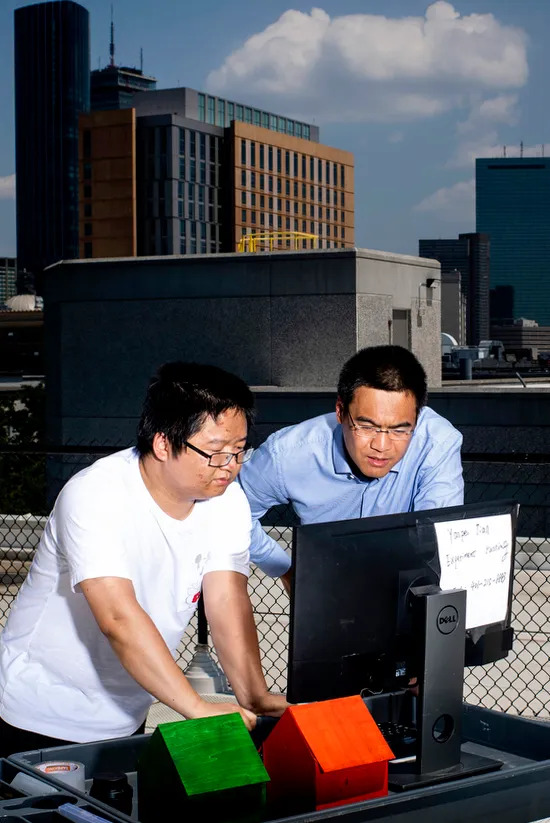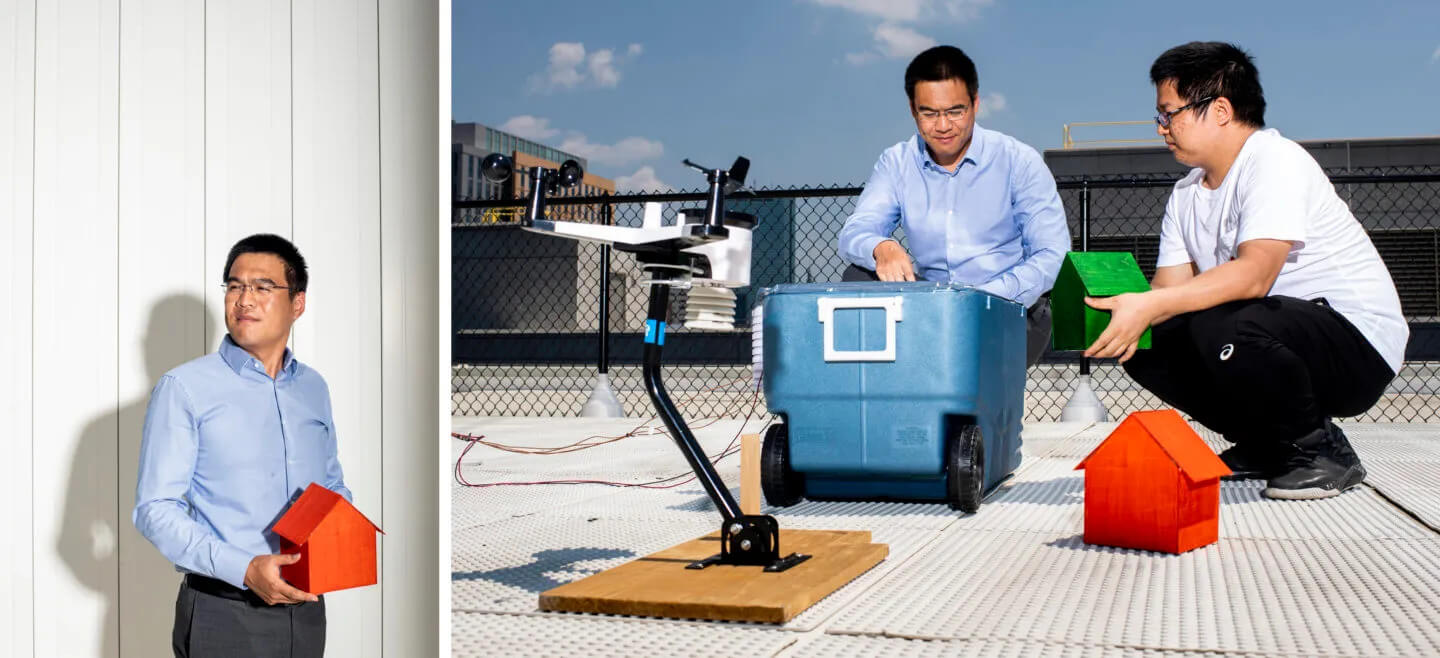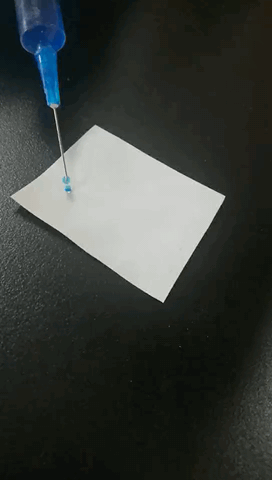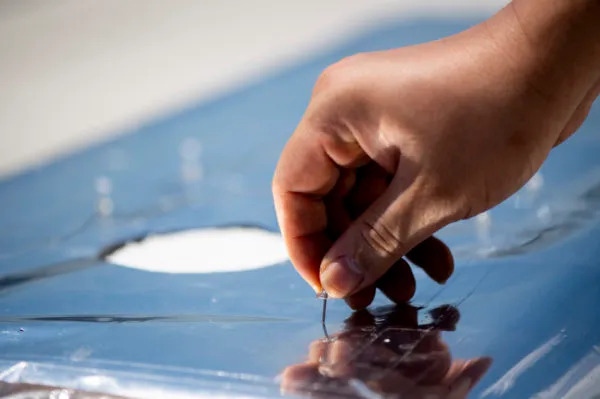
- Sustainable Planet -
- 4mins -
- 532 views
Goodbye AC: This new eco-friendly roofing material keeps houses cool without electricity
Boston professor creates “cooling paper” that reflects heat away from rooftops and even sucks excessive warmth out of homes and buildings — and the best part is that it is 100% recyclable.
Boston Inventor creates new material that can keep buildings cool without a.c.
A Boston professor created an invention that reflects the heat off of rooftops and even sucks the heat out of homes and buildings — and the real kicker is that it is 100% recyclable.
Yi Zheng, associate professor of mechanical and industrial engineering at Northeastern University, created “cooling paper” so that a building or home could essentially keep cool on its own, with no electricity required, according to Northeastern University’s blog.
The paper can cool down a room’s temperature by as much as 10 degrees Fahrenheit — a game-changing alternative to air conditioners that require a lot of electricity and money from home owners.
In the U.S. alone, where three-quarters of all homes have air conditioners, these appliances release roughly 117 million tons of carbon dioxide into the air each year. Air conditioners also use about 6% of all electricity produced in the U.S., and cooling down a home costs about $29 billion a year for homeowners. — TheHill

New Eco-friendly “cooling paper,” works in two ways
Yi Zheng, associate professor of mechanical and industrial engineering at Northeastern, has created a sustainable material that can be used to make buildings or other objects able to keep cool without relying on conventional cooling systems, reported Northeastern University’s own Eva Botkin-Kowacki soon after Zheng’s paper was published.
Zheng envisions this material covering the roofs of houses, warehouses, office buildings, or other edifices. It also could be incorporated into the materials used to construct the buildings, too, he says.
The material, which Zheng has dubbed “cooling paper,” works in two ways. Its light colour reflects those warm solar rays away from the building, and it also sucks heat out of the interior, too.
Wait, you may be saying, shouldn’t reflecting the heat away be enough? No, actually, because the sun isn’t the only thing warming up our homes. Electronics, cooking, and human bodies generate warmth, too. The porous microstructure of the natural fibres in the cooling paper absorbs that warmth and re-emits it away from the building.
Source: Northeastern.edu

The pulp is made out of paper waste and the material that makes up Teflon
Cooling paper is, in fact, made of paper. One day, Zheng, who studies nanomaterials, saw a bucket full of used printing paper. He recalls thinking to himself, ‘How could we simply transform that waste material into some functional energy material, composite materials?’
So, with the help of a high-speed blender from his home kitchen, Zheng made a pulp out of paper waste and polytetrafluoroethylene (PTFE), the “non-stick” material that makes up Teflon. Then he formed it into water-repelling “cooling paper” that could coat homes. Then, he and his team tested its capacity to keep cool under various temperature and humidity conditions.
Zheng and his colleagues found that the cooling paper can reduce a room’s temperature by as much as 10° Fahrenheit. He selected materials that would reduce the cost of deploying this new technology to cool homes.
The process for creating and testing the new material was described in a paper published last month in the American Chemical Society journal Applied Materials & Interfaces. Zheng was awarded a National Science Foundation CAREER Award grant in 2019 for his research.
Source: Northeastern.edu


Zheng hopes his work will help combat climate change.
The cooling paper isn’t just eco-friendly in its ability to reduce your energy footprint. It’s also recyclable. The material can be used, exposed to solar radiation, weather, and varying temperatures, then reduced to a pulp (again) and reformed without losing one iota of its cooling properties. Zheng has tried it. And the recycled cooling paper performed just as well as the original.
“I was surprised when I obtained the same result,” Zheng says. “We thought there would be maybe 10 percent, 20 percent of loss, but no.”
Zheng doesn’t just aim to reduce your utility bills through his research. He also hopes that his work will help combat climate change.
“The ultimate goal is to reduce global warming,” Zheng says. “The starting point is to reduce the use of carbon-based materials and also to reduce global warming.”
Source: Northeastern.edu


